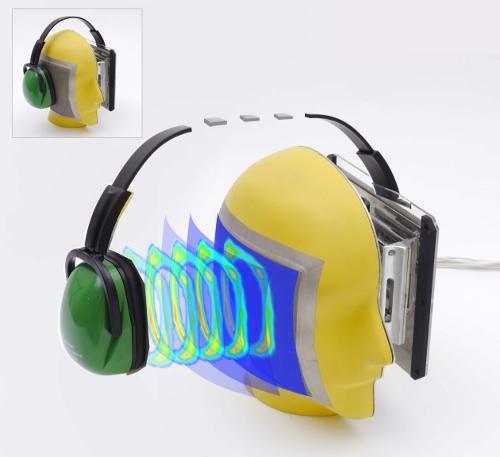5 Things That Can Benefit From Capacitive Tactile Pressure Sensors
December 2, 2013

Though physical comfort can make or break an experience, gauging it is something people seem to have a hard time doing, possibly because we're not very good at determining static pressures in general. That is to say, the human body tends to be more sensitive to pressures that change than to constant loads. This can be a barrier to determining the comfort or fit of something that will be in long-term contact with the body.
Highly sensitive capacitive tactile sensing technology can help us get around that human limitation. With that in mind, here's a list of some tools and products that could benefit from pressure sensor technology.

Headgear: When it comes to headgear, comfort is often as important as functionality. For example, while it can be difficult to discern the difference in noise attenuation from one brand of noise-canceling headphones to the next, comfort and fit can play a huge role in determining whether someone will purchase -- and be willing to use -- a particular set.
Of course, determining the comfort and fit of such headgear while developing and designing it can be difficult, as comfort is subjective. Capacitive tactile pressure sensors, however, have the potential to make this factor quantifiable and objective. Research is ongoing in this area. For example, a Brazilian professor, who worked with Pressure Profile Systems (PPS) to explore the comfort of protective headsets, is attempting to develop a standard for determining fit.
Steering wheels: Though this idea is far from fruition, tactile sensors embedded in a car's steering wheel could help reduce road rage and increase safety. If the sensors detect that the driver is gripping the wheel too tightly -- ostensibly because of stress -- the car could automatically begin playing music over the speakers to calm the driver. The sensors could also detect whether the steering wheel was being gripped at all.
The driver's seat: It can be difficult to optimize the settings of automobile seats, which have a relatively high number of articulation angles, from the pitch of the seatback to the height of the bottom to the amount of lumbar support. Embedded sensors could take the guesswork out of the equation, sensing where and how the driver's body is placing pressure on the seat and "telling" the seat to adjust accordingly, increasing comfort and reducing fatigue. This application could also be useful in airline seats.
Mobile phones: Smartphones have become an integral part of our lives, and there's a golden opportunity for tactile sensors to join the suite of sensors (such as cameras, gyros, and magnetometers) already included with most phones, many of which already have the necessary infrastructure in place. Pressure sensors could detect how tightly users are grasping their devices, enabling the phones to determine the user's stress level. Some games would also benefit from a smartphone's ability to communicate force information.
Additionally, a sensor on a phone could conceivably measure a person's blood pressure when placed against the wrist. Tactile sensors are already used in consumer electronics, but at a relatively basic level, often limited to two force levels, touch, and click. Greater functionality is coming.
Glasses: Determining the comfort and fit of eyeglasses when shopping can be exceptionally difficult; purchasing a pair because it felt comfortable in the store only to find that it pinches or doesn't sit quite right weeks later is a common (and frustrating) experience. A simple device with sensors and a basic indicator could help quantify the process; placed between a prospective pair of glasses and the shopper's face, the device could give an objective reading of the pressure that the glasses are applying.
Related posts:
About the Author(s)
You May Also Like



